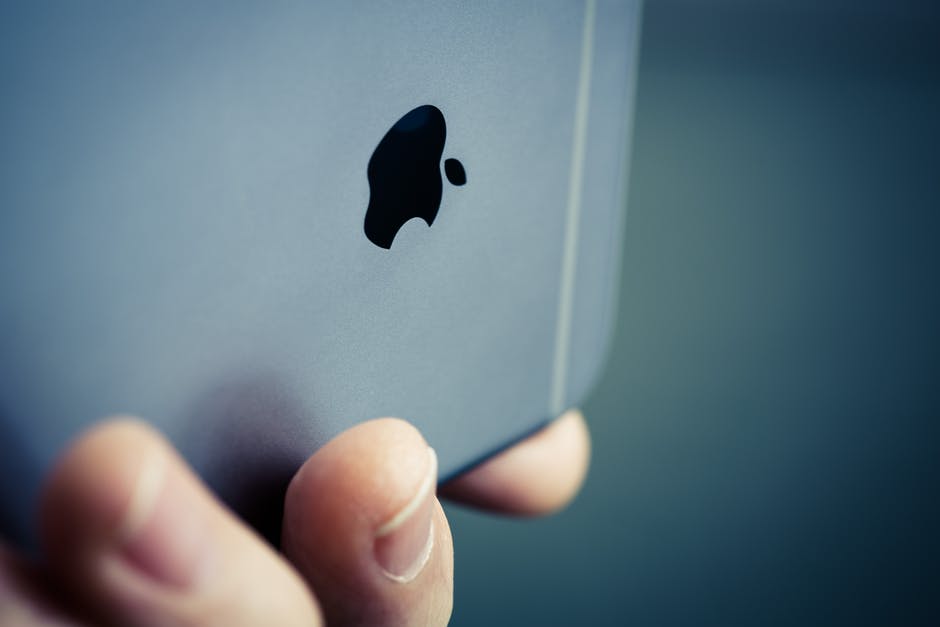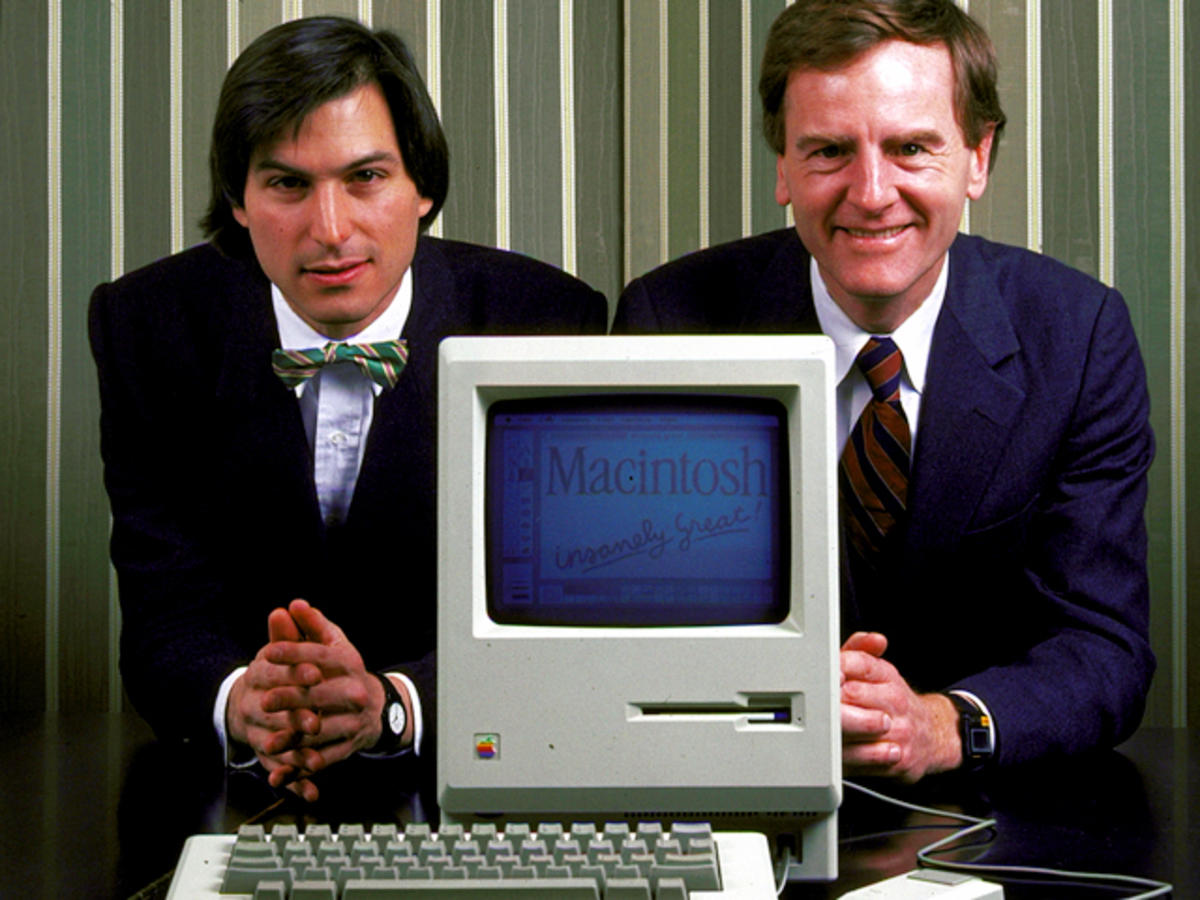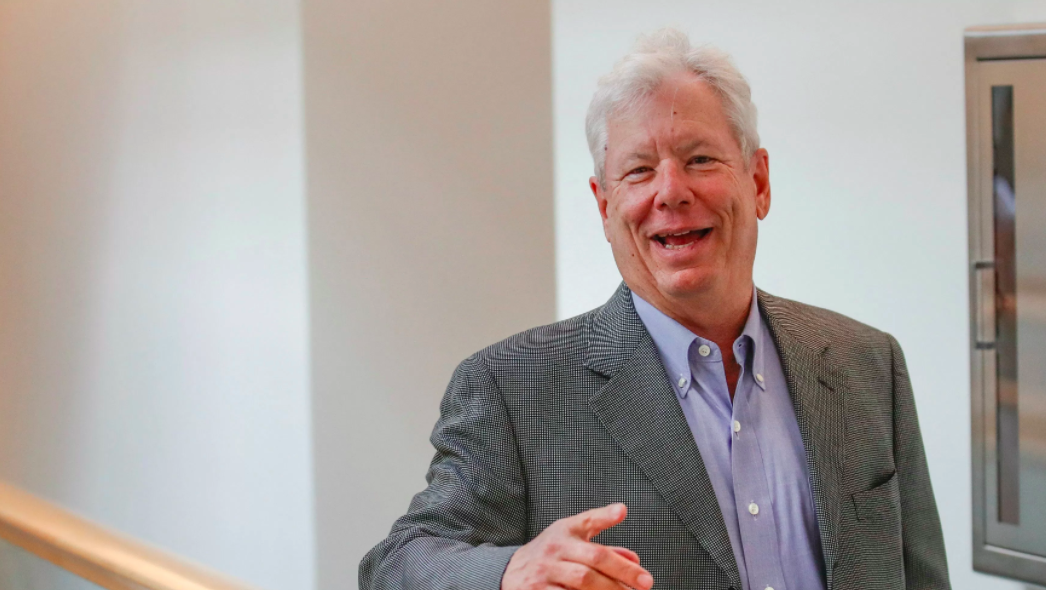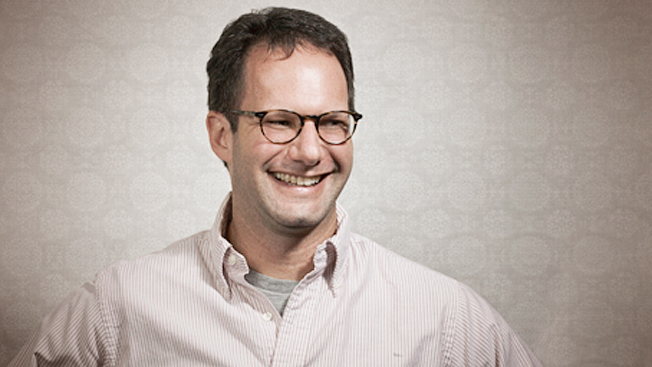By
Mark DiMassimo | 11/10/2017 | in

Some organizations so outperform most organizations that it seems wrong to put them in the same category.
While most organizations fail in their early years, most of the survivors also fail. Among the majority that survive, generating average growth means growing at a few percentage points per year.
Only a small minority are fast-growing companies. Of the fast-growing companies, many are in fast-growing categories. No doubt, the leaders of these companies know that they are beating the odds. Likely, they feel very successful. But the fact is that most of these companies only grow fast quickly for a limited time, and then they revert to the mean — or fail. Particularly in gold rush industries, there may be many fast-growing companies, but nearly all bubbles end in pretty much the same way. They burst.
I’ve long been fascinated with the extreme exception — the company or organization that builds an iconic brand and inspires a movement.
Most businesspeople miss the most important things that make for this kind of success. Perhaps this is because they try to reduce the life of the business to just business. Working closely with the leaders of rare outperforming, high-impact organizations, I’ve always found them to be on a mission to create something very different in the world. While the people at the top of these organizations are typically extremely savvy about business, they haven’t been so much business managers as movement leaders.
Call it “purpose” or “meaning” or “an inspiring idea” that fuels these businesses. Behavior change scientists might call it “a moral frame” that attracts, inspires and encourages the identification we measure as brand affinity, customer loyalty and advocacy.
While most businesspeople seem to judge incentives by the simple measure of whether they bring about the desired action, the leaders of these companies see incentives differently. They realize that all action is not created equal, and they appreciate that the meaning behind the behavior is actually much more important for long-term success and impact. The results of behavioral economics experiments actually bear this out.
Most business managers incentivize action, but great leaders inspire action.
Part of inspiring action is actually forgoing the easy results that could come from generating action with cheap but unaligned incentives. Don’t read that wrong — they don’t forgo the results. In fact, their results are much, much better.
It’s not the results they sacrifice. It’s the ease. Cheap tricks are common, easy to explain and relatively easy to execute. Copying your competitor’s “loyalty” program, for example.
Building a distinct and meaningful brand with an entirely integrated experience is a whole other thing entirely. It just happens to work so much better.
By
James Nieman | 11/07/2017 | in

We are so proud to announce that earlier today, DiMassimo Goldstein CFO and Partner Desiree Cortez was recognized as a winner of the 2017 SmartCEO Brava Award!
The Brava Awards program celebrates high-impact female business leaders who set their companies on the path to tremendous growth, and no one is more deserving of that honor than Desiree. She is a fearless leader who brings an unmatched enthusiasm and passion to everything she does, and we couldn’t be more thrilled that her hard work is being recognized by the rest of the industry.
In addition to being agency Partner and CFO, Desiree is also the head of our human resources, finance and operation departments – but even that would be selling her value and importance to the growth of this agency short. For 12 years now, she has been instrumental in helping establish DiGo’s position as the lead behavior change agency for life-changing marketers. We simply would not be where we are today without her.
Internally, there isn’t a better representation of our agency culture than Desiree. She puts our core values of love, courage, and understanding at the center of everything we do, and the team is better for it. Whether it’s our weekly meditation sessions, salad bars, quarterly internal surveys, or our buddy lunch system, Desiree has had a hand it all.
She has a passion for helping people grow. A former intern at the agency herself, she helped establish our internship program, which over the years has evolved into a cornerstone of our company. She creates the training materials for all new team members, ensuring that they are both prepared and comfortable to contribute right away. For team members who have been here for years, her door is still always open for mentorship. Desiree goes out of her way to make sure that every person within these walls knows that they are valued member of the team, and works hard to help them realize their potential.

This latest award marks yet another accomplishment in Desiree’s already inspiring career — which she wrote about on this very blog last year. But above all of that, she is a rock to her family and an incredibly active member of her community. We are so lucky to have her.
From all of us here at DiMassimo Goldstein, Congratulations Desiree!
By
Mark DiMassimo | 11/06/2017 | in

When Steve Jobs was trying to hire John Sculley, then the CEO of Pepsi, to come and work with him at Apple, Jobs said,
“Do you want to sell sugar water for the rest of your life, or do you want to come with me and change the world?”
Sculley did leave Pepsi and join Jobs at Apple, becoming CEO. At first, it was a lovefest, but over time they clashed, leading to Jobs’ ouster from the company he had founded.
It turned out they didn’t share the same values.
For Jobs, changing the world was a moral imperative. For Sculley, the technology business was a cool consumer products business that was first and foremost a business.
This cautionary tale is a good way to introduce the topic of moral reframing. It contains all the tensions a behavior change marketer must resolve in order to successfully use this technique.
The news is that Robb Willer, a Stanford sociologist, has found that an effective way to persuade people in politics is to reframe arguments to appeal to the moral values of those holding opposing positions (https://news.stanford.edu/2015/10/12/framing-persuasive-messages-101215/).
We know from testing and experience that similar reframing works outside of the political realm as well.
For example, let’s say my company has invented a new way to get you to exercise more.
I believe that if you were to try my product, you would exercise more, be healthier, live longer and feel more energy and vitality.
In other words, in my moral universe, exercise is about health.
But, maybe my audience cares about cool experiences and being part of an “in” crowd. If I reframe my presentation of my innovation in that frame, I’ll make many more sales. My persuasive communication will be much more successful, creating much more behavior change.
If we design our experience around this frame, we’ll create much more sustainable behavior change.
So, why doesn’t this happen more often?
“Moral reframing is not intuitive to people,” Willer said. “When asked to make moral political arguments, people tend to make the ones they believe in and not that of an opposing audience – but the research finds this type of argument unpersuasive.”
Most people tend to pitch from their own frames of reference, and moral frames are the least flexible.
But, understanding the audience and employing the audience’s frame of reference is the core of successful communication.
So, let’s get back to that Steve Job’s story.
Did he know something about Sculley? Did he know that Sculley had achieved wealth, respect and power and was now looking for a legacy?
Very likely. Jobs was an excellent salesman.
Or, did Jobs just speak from his own moral frame and it happened to work in this case?
Jobs was a true believer, so this is likely.
I tend to think it was both. Jobs thought he’d found someone who was ripe to be influenced by a moral frame they could share.
This is the tension between leadership and sales, between brand and response, that must be managed.
Excessive personalization tends to obliterate integrity in the brand. By attracting people who don’t share your values, you end up with a customer, an employee – or in Job’s case, a boss – who doesn’t really share your values.
And, bad things happen.
One approach that works particularly well in politics is to look for a larger frame. This is a way to get beyond my frame or your frame.
For example, Lincoln believed “if anything is evil, slavery is evil.” Others believed “slavery is our God-given institution,” while still others believed “slavery is an evil, but it’s not worth risking war over.”
Lincoln looked for a new moral frame that could be shared by more of his audience. He found several. The first was: “A house divided against itself cannot stand.” This, from the Bible, spoke to a broad swath of Lincoln’s audience. He employed the frame he later used in the Gettysburg Address, when he argued that the Founding Fathers had already dealt with the issue of slavery, that they had worked to set it “on a course of ultimate extinction.”
At the time, respect for the Founding Fathers was very great – it was a moral frame shared by a large percentage of the audience.
So, in sum:
- Speaking from your own moral frame is integrity, but it is often ineffective integrity.
- Speaking from your audience’s moral frame is more effective, but it can be manipulative and hurt the brand.
- Finding a frame that can include both the brand’s values and the audience’s too ultimately creates the most sustainable behavior change while it builds the brand.
For our client, Weight Watchers, which believed in healthy weight, healthy lifestyle and healthy community and then found that their audience had shifted focus to healthy lifestyle, we found that their frame was already broad enough to adapt, and all that was needed was to refocus the members themselves.
For Sallie Mae, we saw that “Let’s Make College Happen” could unite all the constituencies – parents, students, guidance professionals and Sallie Mae employees – all of whom are focused on making college happen.
TradeStation was obsessively focused on the most powerful trading technology while living the Miami lifestyle. When it became clear that the audience cared about both, rather than just the awesome technology, TradeStation widened the marketing frame, and the result has been like a beautiful big blue wave.
Frame like a master, and you’ll love the results.
This has been your Behavior Change Science Update: Moral Reframing.
Happy #InspiringAction
By
Team DIGO | 10/20/2017 | in

We’re so proud to announce that Rebecca Weiser, our very own Director of Integrated Media and Analytics, has been named one of Gramercy Institute’s 2017-2018 “20 Rising Stars in Financial Marketing!”
We’ve known Rebecca to be a star since the day she joined DiGo as a Sr. Media Planner back in 2012. In the five years since, she’s proven that time and time again, growing through the ranks of the agency and continuing to be a true agent of the client.
Rebecca has played a vital role in inspiring action and growing the businesses of leading financial brands such as Ally Bank, TradeStation, Online Trading Academy, and Affinity Federal Credit Union through award-winning media strategies. In a constantly evolving media landscape, Rebecca considers all factors that could potentially impact media performance. She approaches each new business problem as an opportunity to provide creative, innovative, and thoughtful solutions. By looking at the story beyond the numbers, she brings unique insights to the table and offers actionabale analysis that has consistently driven growth for our clients.
Her leadership among the team provides clients with the ultimate confidence that their dollars will be spent efficiently and their trust in her has resulted in significant business growth year over year.
Congratulations Rebecca!
By
James Nieman | 10/19/2017 | in

Thanks to the brave and brilliant contributions of one renegade, economic theory as we know it has been changed forever.
Richard Thaler, the world-renowned behavioral economist who has long challenged the standard economic model, was awarded the Nobel Memorial Prize earlier this month. His work, which Nobel Prize committee member Peter Gärdenfors simplified as “[making] economics more human,” has influenced our education system as well as government policy.
Thaler joins a small list of behavioral economists to win the award. Robert J. Shiller was among the winners in 2013, and Thaler’s longtime collaborator and friend, Daniel Kahneman, shared the award in 2002. Though they won before him, it is Thaler who is widely credited with bringing behavioral economic theories to the mainstream.
Thaler has dedicated his life to helping people understand how individuals make choices so that they can be led to make better ones. His best-selling book, Nudge, was the culmination of decades of behavioral science research, and was written to prevent people from making mistakes that can negatively affect their individual and collective well-being. That’s an inspiring mission, and one that resonates with all of us here at DiMassimo Goldstein.
We use behavioral change marketing to drive growth in brands and businesses that change lives for the better. We study the work of behavioral pioneers like Thaler to become experts at providing our clients with the strategies they need to drive profound behavioral change in the areas of healthy, wealthy and wise. Understanding human behavior is key to empowering brands to provide their consumers with a self-actualizing experience, — and that experience is what will ultimately inspire them to make better decisions and form more empowering habits.
This has been our mission for 21 years, and it’s never been more important than it is today.
We applaud people like Thaler for continuing to push the conversation forward, and for persuading more people to pay attention to human behavior. To read more about Thaler and his work, check out this article in The New York Times.
Congratulations on the honor, Richard, and keep up the good work!
By
James Nieman | 10/16/2017 | in

From AdAge:
“When ANA President Bob Liodice introduced Weight Watchers head of marketing today, he didn’t hold back when describing just how poorly Weight Watchers was doing in early 2015 – it was “at the brink of irrelevance.” Quite an introduction for Maurice Herrera.
In fact, January 2015 was one of the company’s worst January periods ever in terms of signups, says Herrera, who had joined the company just three months earlier. Timing was crucial, because the first quarter accounts for more than 40% of the company’s business, he notes. People were looking for other ways to lose weight, including wearable fitness trackers and Paleo dieting, resulting in Weight Watchers subscriptions dropping 25 percent year-over-year that quarter, Herrera recalled. Its stock skidded from $25 to $7 per share, he said, and fell even further that summer. Herrera had to lay off about 25 percent of his team of 30 or so people.
Herrera and his slimmed-down team, with agency DiMassimo Goldstein, came up with a more consumer-centric approach. “Since everyone believes that they have a unique challenge, it’s critical for them to look at Weight Watchers and see a bit of themselves in the brand,” Herrera says. “We needed to create a brand identity that felt accessible and relatable as well as aspirational.””
To read the rest of AdAge’s live blog, click HERE.
Last week, Maurice Herrera, the Head of Marketing for our inspiring action client, Weight Watchers, had the honor of speaking at the 2017 ANA “Masters of Marketing” event down in Orlando, Florida.
The event, which boasted over 2,500 attendees, is one of the biggest and best gatherings for senior marketers in the country.
Herrera was invited to speak about the transformative journey that Weight Watchers has enjoyed these past two years. Together, with Herrera and his team, we’ve taken one of the country’s most historic brands and brought them back into the national spotlight, leading to seven consecutive seasons of brand growth. We couldn’t be prouder to be their agency.
Now that’s #inspiringaction.
By
James Nieman | 10/04/2017 | in

This week on The A-List Podcast, host and DiMassimo Goldstein CCO Tom Christmann interviews Bobby Hershfield, Partner and CCO at SS+K. Hershfield started his career in account management before eventually shifting over to copywriting during his time at Wieden+Kennedy, and since then he has spearheaded the creative for some of the world’s biggest name brands such as Dell, JCPenney, Target, CNN, and Johnson & Johnson.
Listen in as Hershfield talks about what makes an all-star account person, working with former A-List guests Eric Silver, Ty Montague and David Angelo, and why he ultimately took a pay cut to become a creative. Full episode and show notes below!
Show Notes
- [0:00 – 1:19] Intro
- [1:20 – 3:59] Hershfield talks about what it was like moving around a lot as a child, how he had to adjust, and meeting new people
- [4:00 – 5:18] How Hershfield first discovered advertising from a Tom Hanks movie
- [5:19 – 6: 53] Creative Writing at the University of Michigan, applying to letterman, and graduating in a recession
- [6:54 – 11:01] Getting his first job at DDB in account management, being let go and having to work as a video store clerk before finally getting another job at Chiat\Day
- [11:02 – 13:29] Working with Eric Silver, Ty Monague, David Angelo at Chiat\Day
- [13:30 – 17: 34] The first “virtual office” and taking creative classes
- [17:35 – 19:00] What makes an all-star account person?
- [19:01 – 23:31] Hershfield’s mentors in account management, the feeling you get after he was let go, and the story of how he hung around until he was rehired
- [23: 32 – 27:00] Accepting an offer at Wieden+Kennedy, the difference between New York and Portland, and how the culture at Wieden focused on the work and not the lifestyle
- [27:01 – 31:19] Moving to New York to take a pay cut and shift to the creative side
- [31:20 – 35: 24] Thinking irresponsibly and the different line of thinking you have to adopt to be a creative
- [35:25 – 39:44] Working Albert Brooks for his first commercial
- [39:45 – 43: 35] What it was like working under Ty Montague and the benefit of tough love
- [43:36 – 47:20] Managing a team, being a mentor, and when you know it’s time to become a creative director
- [47:21 – 53:47] What Bobby looks for in a young creative, what made Gerry Graf a special teacher, and the many advantages of attending Adhouse
- [53: 48 – 54:43] Outro
“The A-List” is a podcast produced by DiMassimo Goldstein, recorded at the Gramercy Post, and sponsored by the Adhouse Advertising School, New York’s newest, smallest, and hippest ad school. You can subscribe and rate the show on iTunes or listen along on SoundCloud. For updates on upcoming episodes and guests, be sure to like the A-List Podcast on Facebook and follow host Tom Christmann on Twitter.
By
Tom Christmann | 10/03/2017 | in
How do you turn an annual tradition into something brand new that will get people talking again? Find a precocious little girl, put her in a Flamingo costume and let her loose in Washington Square Park.
Okay I’ll back up. When our new client (The Bronx Zoo) gave us the assignment to help them sell tickets to their weekends-only, all-October-long celebration of Halloween (Boo At The Zoo), we knew we had to perform. So we decided to tap into NYC’s love of all things October 31.
Perhaps more than any other city in America, New York City loves Halloween. Around here, the costume shops start popping up as soon as summer ends, like ghostly harbingers of the dark, cold, candy-filled nights to come. And eventually, someone pops the chilling question: “What are you gonna be for Halloween?” Insert scary music sting here.
We wanted to give people that same feeling of anticipation for Boo At The Zoo. So we conjured up Flamingo Girl, a precocious, strong-willed seven-year-old who was so excited for Boo At The Zoo that she was already dressed in costume. Katie, an art director here, even made the costumes (we needed multiple heads for some reason) herself. Then a bunch of us (and Broderville Films) spent the day in Washington Square Park with hidden cameras as FG asked everyone her question: “What are you gonna be for Boo At The Zoo?”
She asked cabbies. And statues. And tourists. And policemen. And hot dog vendors. And dogs. In the end, we made a series of little films that are a love letter to New York and an invitation to “the biggest, bestest Halloween event in New York City.” We hope you enjoy.
Oh, and… what are you gonna be for Boo At The Zoo?










